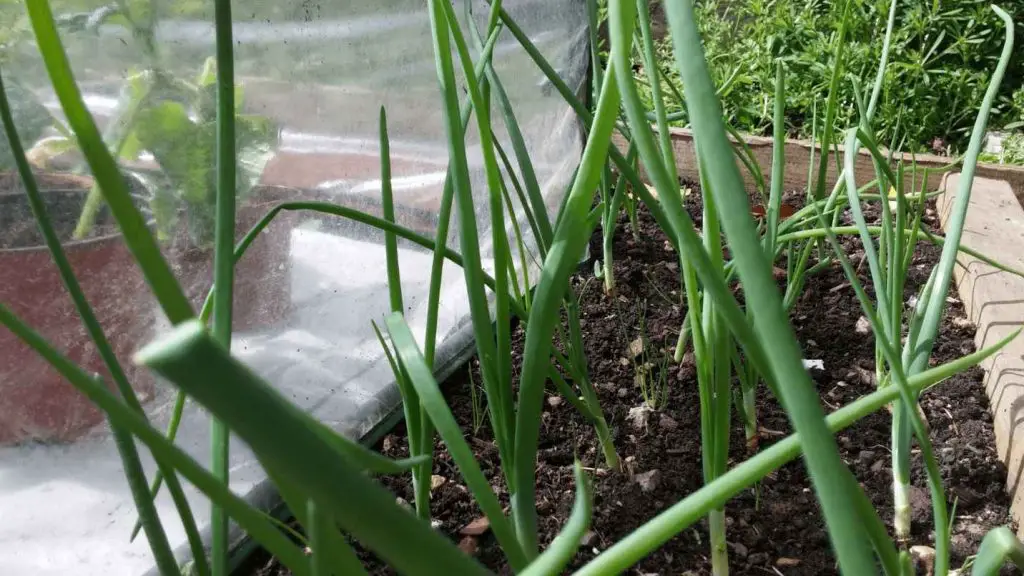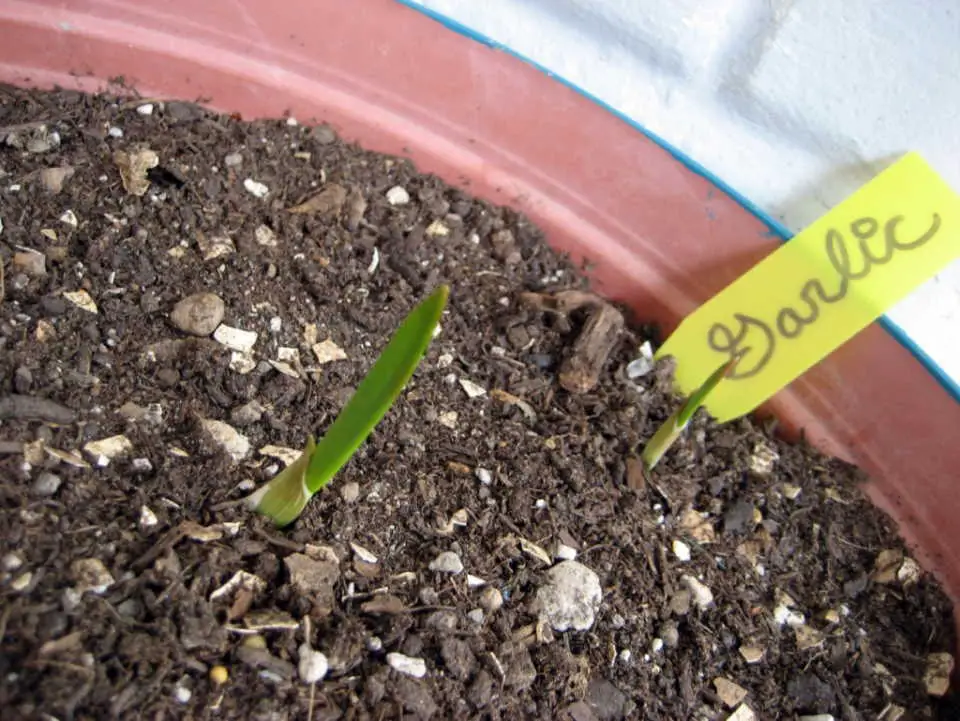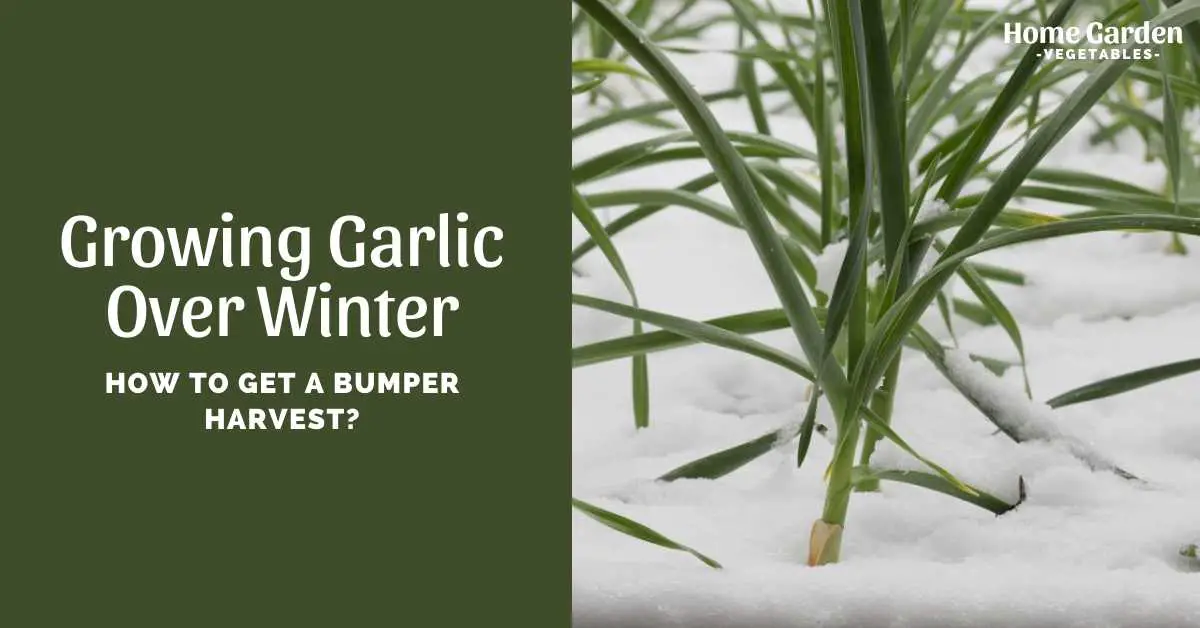Exploding with flavor and strong aromas, garlic isn’t just a kitchen favorite but also a popular ingredient of many home remedies. It grows easily in most climates, doesn’t require a lot of care, and takes very little space in your garden. You can even grow it in containers if a garden isn’t available. Not only is growing garlic over winter possible it will actually give better results. Read on to find out more.
Can You Overwinter Garlic?

Unlike most other vegetable crops that grow in spring, the best time to plant garlic is in the fall. They take plenty of months to mature in the soil before reaching harvest in the mid of the following summers.
Reader Poll: What online courses would interest you?
You can overwinter garlic in almost all climates, including the northern zones. Garlic is very cold hardy and, in fact, benefits from prolonged exposure to cold weather during the first few months of growth. Planting them in the fall and overwintering garlic produces intensely flavored bulbs, bigger than those planted in the spring.
If you’re planning on adding garlic to your vegetable garden this season, here’s a complete guide to growing garlic over the winters for the biggest, juiciest bulbs ever.
When To Plant Garlic

The best time to plant garlic is in autumn, so the cloves can have a few weeks to develop roots before the winters’ onset. The cold weather stops their growth. After a dormancy period over the winters, the garlic plants resume growth as soon as the soil starts warming up in spring.
Subscribe to our newsletter!
In colder regions, such as zones 2 and 3, where winter comes early, garlic can be planted as early as mid-September. In warmer climates, you can plant between early October until the end of November.
When Should You Overwinter Garlic?
Garlic cloves require a period of cold weather to mature into bulbs, so it’s ideal to sow them in late autumn or early winter. Make sure your soil is free of weeds and summer crop remnants. Dig in some homemade compost or well-rotted manure before planting, then rake it in well.
Choosing And Preparing The Site
Choose a sunny spot to set the cloves in the ground. Garlic prefers well-drained, fertile soil with a pH between 6.5 and 7. Till the top 6 inches of soil, removing any stones or debris that come in your path. Amend the garden soil with several inches of well-aged manure or compost, together with 5-10-10 fertilizer before planting. If you have poorly-drained, heavy, clayey soil in your yard, planting in raised beds or containers is a better option.
How To Plant Garlic

Generally, gardeners don’t advise growing garlic from store-brought cloves since the variety may not suit your climate. Get cloves from a local nursery or a seed company. Separate the cloves, leaving the papery husk in place, and choose the largest and healthiest ones to plant.
Place the cloves in the soil, 2 to 4 inches apart with a 10 to 14 inch spacing between individual rows. Plant the cloves 1 to 2 inches deep in the soil if you live in a mild-winter region. If you get harsh winters in your region, planting it deeper, to a depth between 2 to 4 inches, can protect it from frost damage.
Remember to set the cloves with the pointy end facing upwards and the wider, root end facing down.
Garlic Care

While garlic is very cold-hardy, and will easily survive over the winters in most climates, here are some tips to ensure it’s well protected over the winters and resumes optimal growth the following spring:
- Keep the soil moist, but don’t overwater garlic, especially during winters. It may even rot if it’s sitting in damp soil. Water it deeply once a week, if there hasn’t been any rain.
- In colder zones, such as Canada and the northern US, gardeners heavily mulch their garlic crop with straw or hay to protect the bulbs over the winter season. In southern regions, mulching is optional, but it’s still recommended since it offers a warmer soil for the garlic roots to continue developing through the early winters.
- Remove the mulch right after the last frost of the spring. In most climates, the ground will still be frozen around this time, and removing the mulch will warm it up faster with the surrounding temperature.
- Garlic plants will remain dormant over the winters, and new shoots will appear in spring. Nip off any flower shoots that appear since they’re going to lower the bulb size.
- Sidedress the plants with a nitrogen-rich fertilizer in early spring. Organic options include chicken manure and blood meal.
- Reduce watering as the ground heats up in summers since the bulbs need a hot, dry period to get ready for harvest.
Protect From Pests And Diseases
Pests aren’t usually a problem with garlic since their strong, pungent smell makes them a natural pest repellent. Aphids can sometimes bother your crop. They feed on garlic leaves and flower buds but can easily be catered. Hose them off or apply a pesticide. An application of neem oil also works well against aphids.
Watch out for white rot, especially during winters. It’s a fungus that can attack your garlic crop during the cold season. It’s a destructive disease since it’s hard to treat and spreads quickly. Choosing good quality cloves to plant from a reliable source, rotating the crop, and cleaning the bed after harvest can prevent the problem.
Growing Garlic Over Winter?
Growing garlic over winter may take plenty of patience, but it will surely pay off with the strongly flavored, giant bulbs to harvest in summers. Dry the bulbs and store them in a cool, dry place to enjoy them for several months, until the next crop is ready for harvest in summers!
Common Garlic Problems in The Garden
Garlic pests and diseases may wreak havoc on your garlic harvest, and you may not even realize it until it’s too late. The following infections are the most typical causes of garlic problems:
- Mites
Mites feed on stem plates and roots may wreak havoc on garlic. Because of their weakened root systems, infected plants will be significantly smaller than non-infected plants and may readily pull out of the soil.
- Fungal
Fungal issues are by far the most prevalent garlic plant issues. Early browning of the leaf or white or gray, fluffy growth down on the stem might be signs that something is awry.
- Nematodes
These are small roundworms that dwell in the soil and feed on roots and bulbs; they may quickly devastate a crop. Nematodes might be the source of your plants’ lack of vitality or swollen leaves.
Diseases Common in Garlic Bulbs
Following are some of the common diseases in garlic bulbs:
- White Rot
It’s the most dangerous of all the garlic infections. It’s caused by a fungus that demolishes entire garlic plant clusters and creates sclerotia that can live in the soil for decades. When the prevalence of white rot is limited, contaminated plants may be rogued and killed, but when the disease spreads, a complete restart in a new area using sterilized instruments is required.
White rot begins as a white, fluffy mycelial growth around the basal plate that travels upwards and forms tiny, black, poppy-seed-sized sclerotia in and on decaying tissue.
How to Prevent White Rot
- Fields and crops are rotated every year.
- Garlic waste should never be composted. Never leave garlic plant detritus in the field; gather all trash and dispose of it properly, or better yet, burn it.
- Botrytis Neck Rot of Garlic
Garlic suffers frequent and considerable losses as a result of this disease. The first signs of water-soaked neck rot along the soil line develop in the spring or early summer. After infecting the pseudostem, the fungus spreads downward, targeting the inner axis and initially leaving the outside asymptomatic.
The outer wrappers of afflicted bulbs generally show deep reddish staining and degradation after curing. The interior wrappers may turn hardened brown or black at this time.
How to Prevent Botrytis Neck Rot
- Make sure your seed stock is disease-free.
- Increase airflow by using sufficient plant spacing and weed management.
- Harvest mature plants with as little damage as possible.
- Rust
Small, round to elongate white specks on leaves and stems are one of the first signs of rust. The specks turn into orange oblong lesions as the condition advances. Leaves turn yellow, wilt, and dry as a result of heavy infection, and bulbs may be considerably decreased in size and quality.
How to Prevent Rust
- If you’re planting in baskets or pots, use a basic fertilizer or potting mix.
- Weeds provide breeding habitat for garlic rust and compete with garlic, which isn’t good at dealing with competition.

